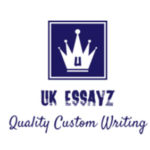International Business Strategy Report – RBV
Company: Waterstones
Words: 800
Based on the given Case【saving waterstones】, and other relevant materials to find out some key strategic issues by evaluating the performance of Waterstones ONLY in RBV perspectives.
1) Evaluation of the Waterstone’s performance (previous, now) following the structure listed below.
2) Using bullet-point to write some key strategic issues based on your analysis above, and comment a set of brief recommendations possibly addressing each issues you find
基于“saving waterstone”这个 Case-study 的材料,再加上其他材料去,在 RBV 角度来
分析公司的表现,并推出一些关键策略问题,再对对应的问题给出一些解决方法。
Structure of contents:
INTERNAL ENVIRONMENT ANALYSIS & RBV
For internal (RBV) analysis, answering the following questions (Only if they are relevant for the case study) should lead to strategic issue identification/ recommendations under Internal Environment Analysis and RBV
A. RESOURCES ANALYSIS- Questions include;
• What are our organisation’s tangible (Financial/ Physical/) and intangible (i.e.; .skills, reputation, technological knowhow) resources?
• What are our threshold resources and strategic resources
• How effectively and efficiently are our resources being deployed? What are your conclusions?
• What can we conclude from financial ratio analysis regarding to our strengths and weaknesses?
B. IDENTIFICATION OF CORE COMPETENCES (Distinctive
capabilities) -Questions include:
• What are the organisation’s distinctive capabilities? (RIAS)
Consider
• Reputation
• Innovation
• Architecture
• Strategic Assets
• How do distinctive capabilities contribute to competitive advantage ?In particular ;
• Do the brand, company or any other reputational factors matter?
• Do such reputations exist?
• Is innovation important? Can it be protected?
• Does the organisation have internal or external architecture and what specific benefits – information flows, flexibility of response, organisational knowledge – does it gain from them?
• Are there strategic assets- in terms of locational advantages, FMA, market power, positive cash flow, patents, and trademarks etc. – what is their origin? Are they sustainable?
• How effectively RIAS analyzed above are translated to sustainable competitive advantage (SCA)
• What other core competences (functional) the organisation possesses. In particular which of its capabilities are ;
• Rare
• Hard to copy by the competitors
• Competitively valuable
• Difficult to substitute
• Durable and difficult to transfer
• Based on the analysis above, what are the strategic implications?
• Does the organisation have resources and capabilities potent enough to produce a sustainable competitive
advantage?
• Use VRIO framework – see below- or similar, assess resources and capabilities strengths and weaknesses.
• If there are any setbacks in utilizing RIAS or other core competences effectively, what strategies are appropriate to develop, protect , stretch and utilize them more effectively
C. ANALYSIS OF ORGANISATION’S VALUE CHAIN ACTIVITIES
What are the key value adding activities the organisation is performing (Draw Value Chain )
What are their cost and value drivers?
When compared to competitors’ value chain or compared historically, what strengths and weaknesses do you detect in the organization’s value chain?
Which (supporting) strategies the organisation should pursue in order to manage cost and value drivers that can also lead to sustainable competitive advantage (SCA) –
D. ANALYSIS OF ORGANISATION’S PAST AND CURRENTLY PURSUED STRATEGIES – (Are the current strategies working?) -Questions include:
• What are the various strategies currently pursued by the organisation?
• Are there any setbacks with the current strategies pursued? Does the organisation take remedial actions to
overcome such setbacks?
• Conduct a historical analysis of your organisation? What conclusions can be drawn from its past strategies? Can you detect any pattern of development? What were the strengths and weaknesses of its past strategies? Did the organisation learn from its past mistakes? (if any) –
E. VRIO ANALYSIS AND RESOURCE AUDIT / LEVERAGE & STRETCH ANALYSIS
For identifying strategic issues & recommendations related to VRIO Analysis and Resource Audit answer the following questions
Conduct a strategic resource audit for tangible and intangible resources- What conclusions can be drawn in terms of company’s strengths and weaknesses in relation to its tangible/ intangible resources? (Strategic issues )
Conduct a strategic resource audit of threshold and unique resources. What conclusions can be drawn in terms of company strengths and weaknesses in relation to its threshold/ unique resources? ( Strategic issues )
• Leverage Analysis Stretch Analysis : Are the existing R&Cs leveraged effectively and efficiently in
terms of ;
Concentration
Conservation
Complementarity
Accumulation
Recovery
o What are the major strength and weaknesses in terms of CCCAR?
What actions do you recommend to improve leveraging of existing
R&Cs?
• Are the existing R&Cs stretched effectively to different
products/ markets/vertical & horizontal relationships? What
actions/ strategies do you recommend to improve stretching of
existing R&Cs
